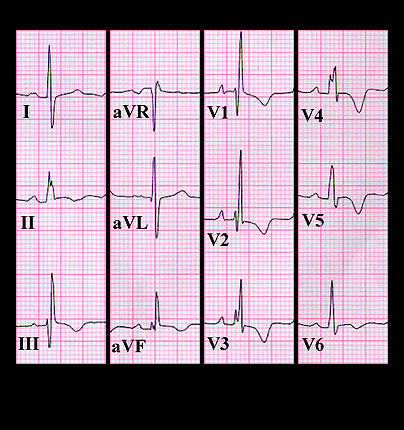
The ECG shown here and again on the next two pages is from a 27 year old asymptomatic female who was found to have a systolic heart murmur during a routine physical examination. The murmur was quite loud (grade 4) and was located in the 2nd left intercostal space. There was also a widely split second heart sound. Determine the rhythm, PR interval and QRS duration and plot the spatial vectors of the initial and terminal portions of the QRS complex in the frontal plane. What is the ECG diagnosis?
